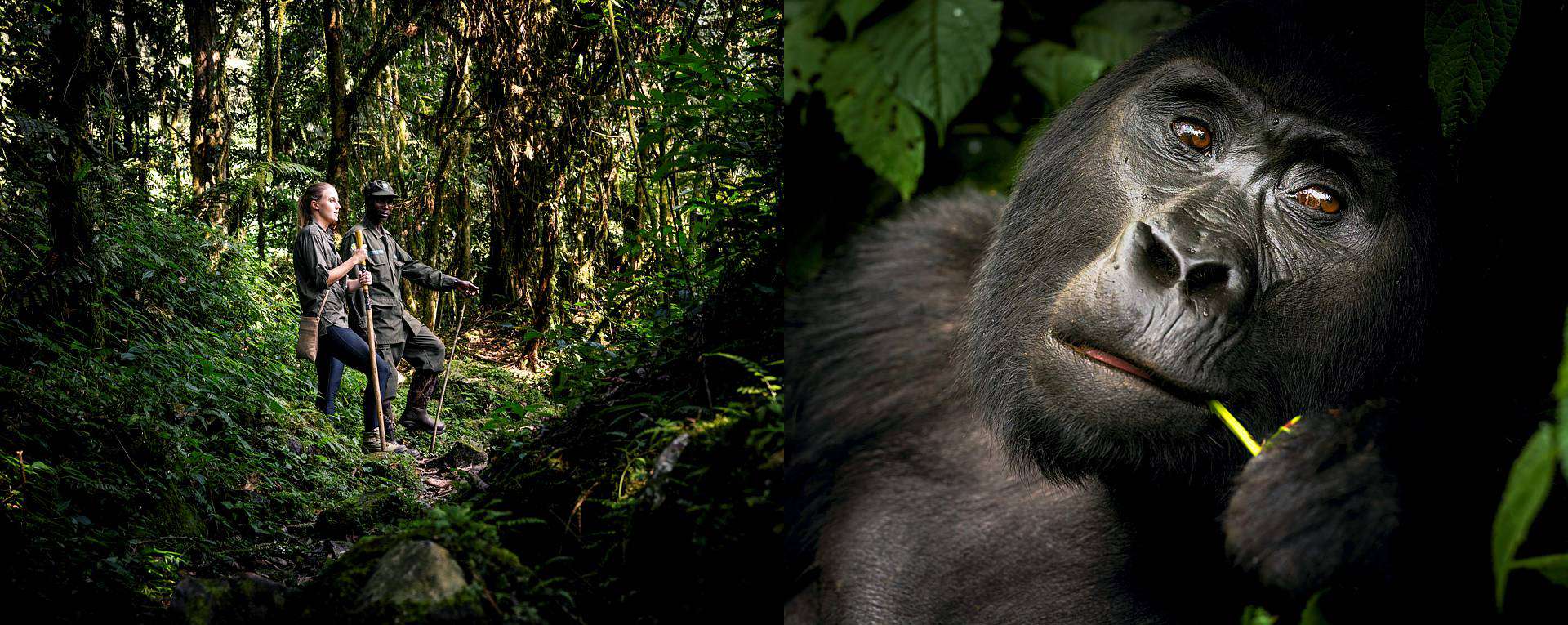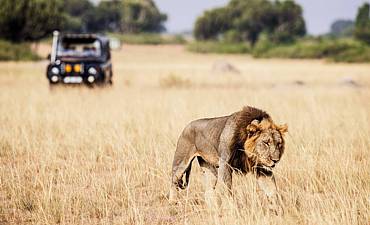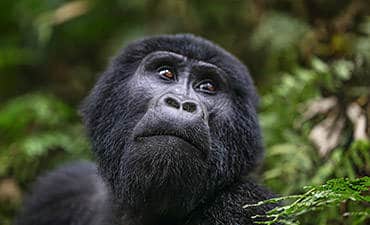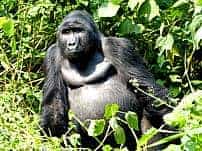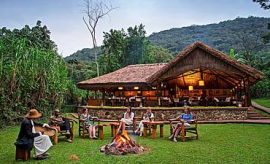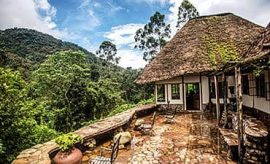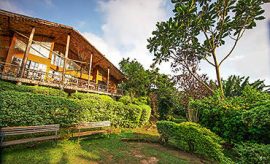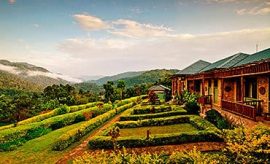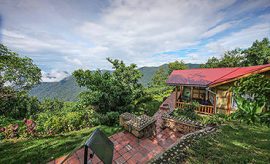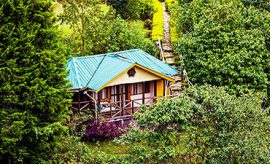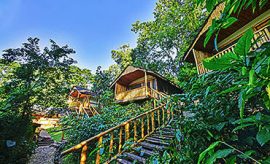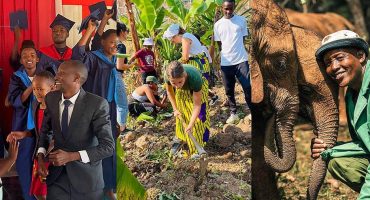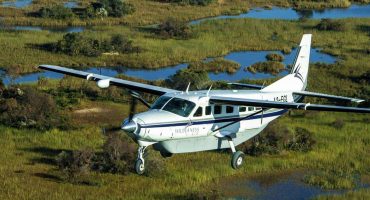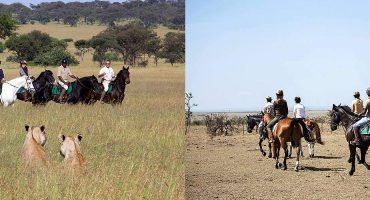GORILLA SAFARI TREKKING GUIDE ON BWINDI IMPENETRABLE NATIONAL PARK IN UGANDA
Bwindi Park Introduction - Location, Wildlife & History
As you crouch a few feet away from a massive silverback in the lush environs of the Bwindi Impenetrable National Park, you’re filled with awe, wonder, and just a tinge of fear as an adorable baby gorilla clambers all over the giant adult. This is only one of the thrilling moments you’re likely to experience on your primate safari vacation in Uganda’s southernmost reserve. Standing on the edge of the Albertine Rift Valley, Bwindi is known for the amazing biodiversity of its rainforests, which date back more than 25,000 years, making them possibly the oldest in the world. This conservation area received gazetted status as a national park in 1991, earning the distinction of UNESCO Natural World Heritage Site in 1994.Key Takeaways
- Uganda’s southernmost reserve
- Part of the Albertine Rift Valley dating more than 25,000 years, possibly the oldest forests in the world
- Dedicated as a UNESCO Natural World Heritage Site in 1994
Watch Video On Bwindi Gorilla Safari Experiences
Travel Guide Content - Start Here
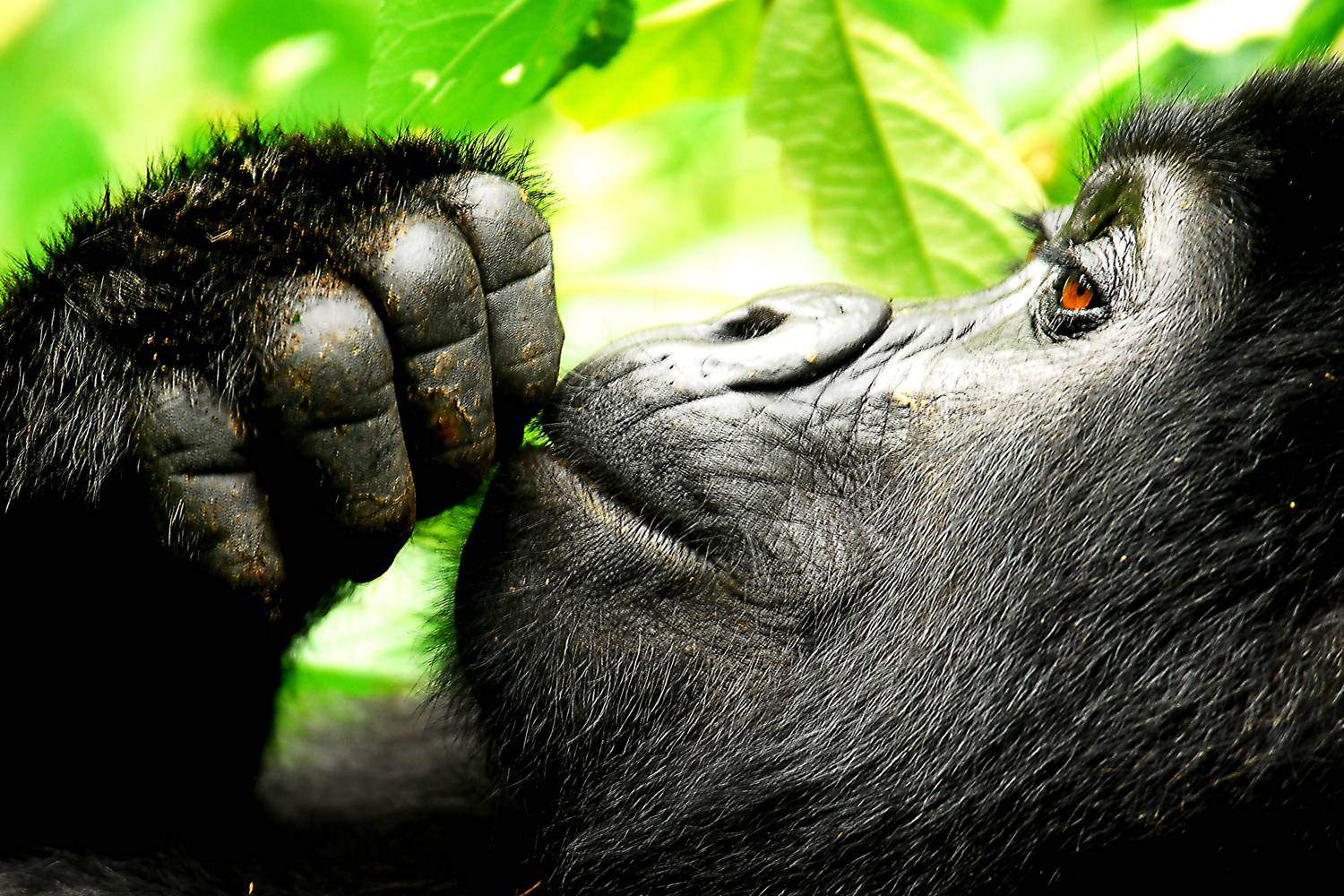 |
1. What Beautiful Landscape & Diverse Habitats Exist In Bwindi?
Key Takeaways
- Extending over an area of 331 square kilometers
- Diverse ecology featuring a range of landscapes including rocky ridges, dense rainforests, deep valleys, lakes, and a multitude of waterfalls
- Famous for mountain gorillas, one of the 10 species of primates that thrive here
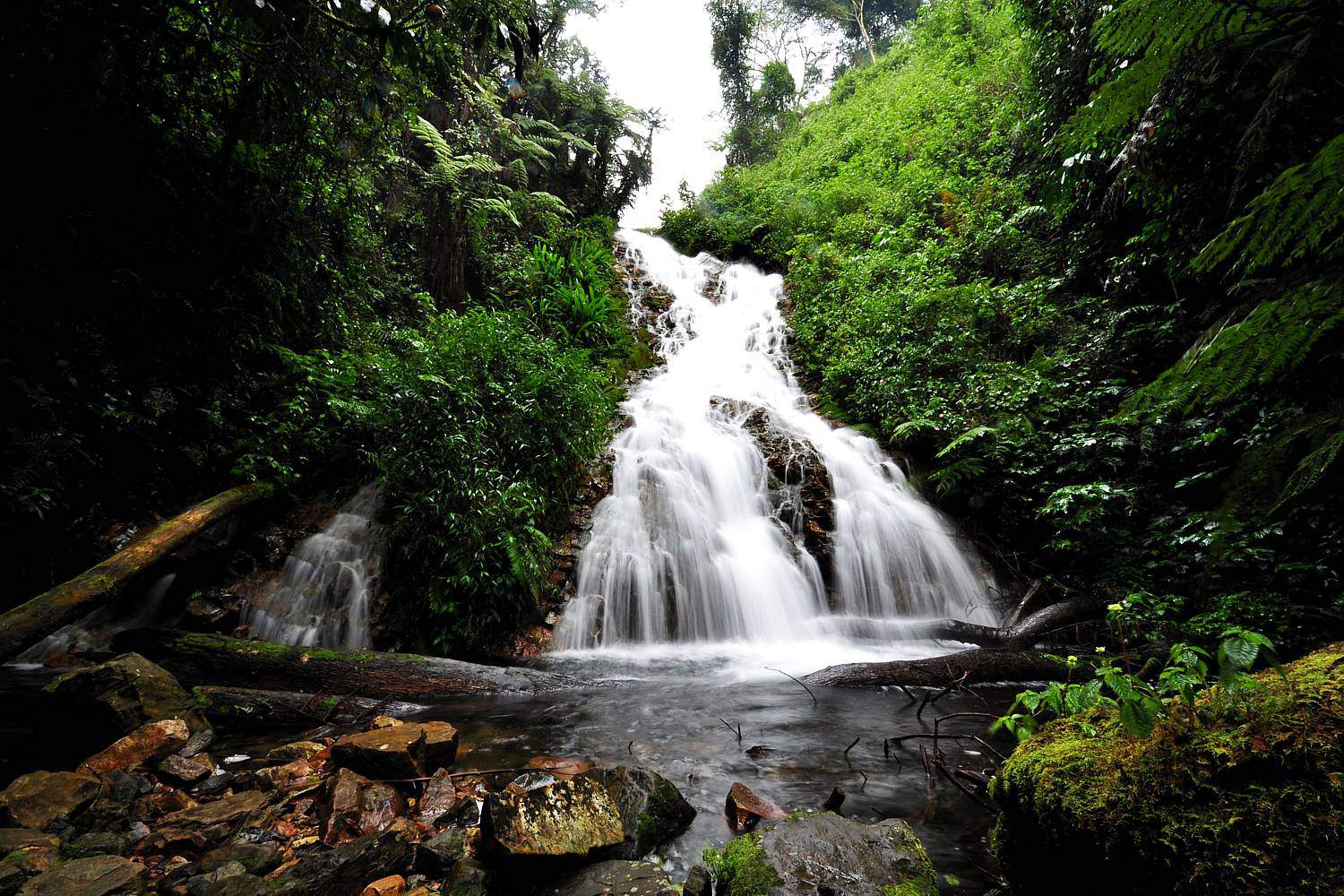 |
2. What Are The Distinctive Primate & Wildlife Experiences Of Bwindi?
Key Takeaways
- Tracking one of the 20 distinct gorilla families numbering over 450 members in all
- Opportunity to view 200 butterfly species, and various other insects, reptiles, and amphibians
- Sightings of some of the 120 mammals and 350 species of birds including 23 endemic to the Albertine Rift Valley
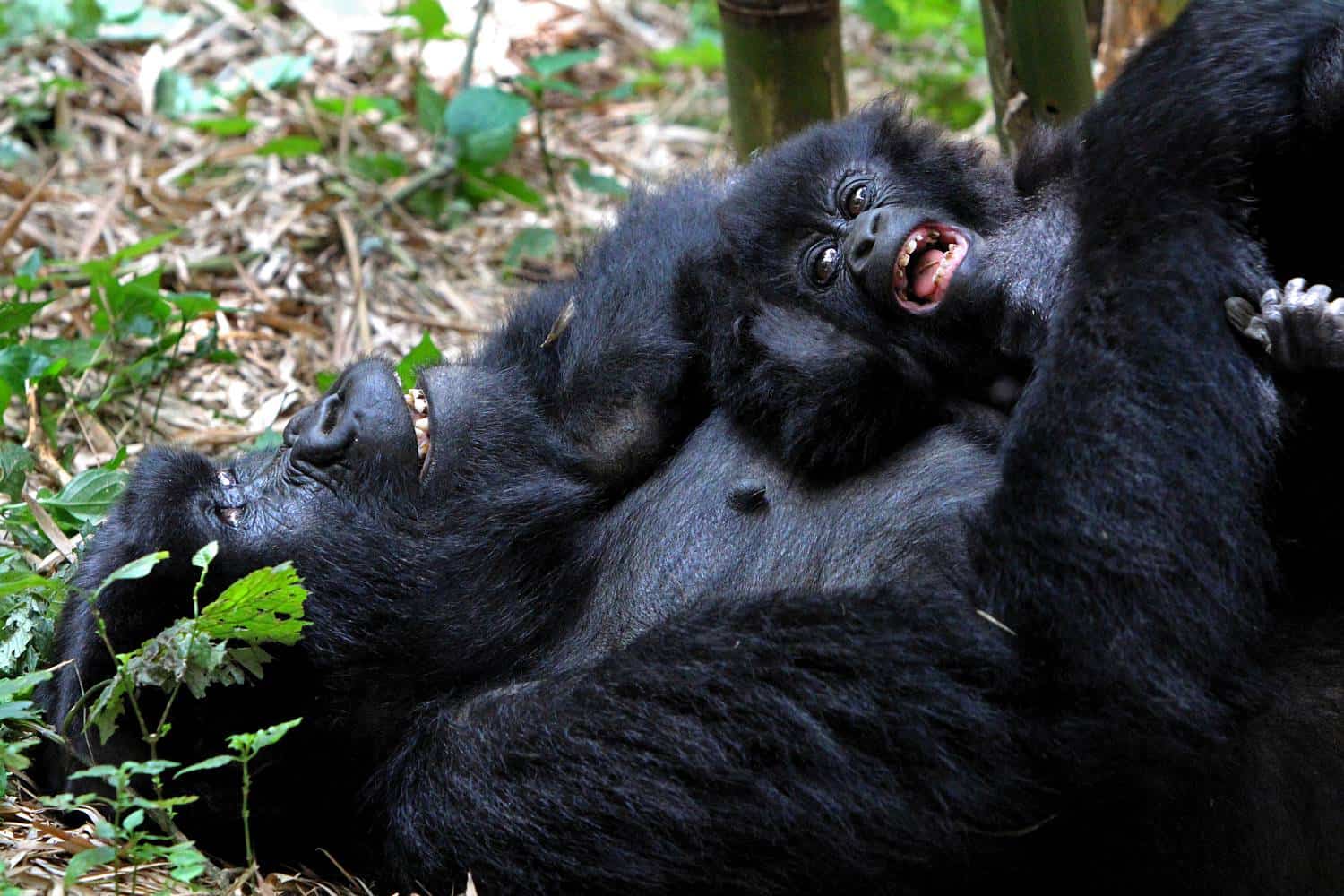 |
3. Overview On Gorilla Safari At Bwindi Including Permit Prices
Key Takeaways
- Tracking and spending time with the gorilla family assigned to you
- Each family led by the alpha silverback male
- Standard permits for $800 to spend one hour observing a gorilla family
- Advanced permits for $1500 to spend 4 hours observing a semi-habituated family
- Additional activity fees and charges for guides and porters applicable
To view the mountain gorillas of Bwindi Impenetrable National Park, you need to acquire one of the two types of permits available. At your discretion, you may tip the guides, rangers and trackers. The cost of hiring a porter, if you need one, is extra. Standard permits cost about $800 and allow you to spend one hour with the gorilla family allotted to you. For the price of $1500, you could spend up to 4 hours with a semi-habituated group from the time they are first spotted; that is, one still undergoing the habituation process. A single group with a maximum of 4 guests are allowed each day on these treks.
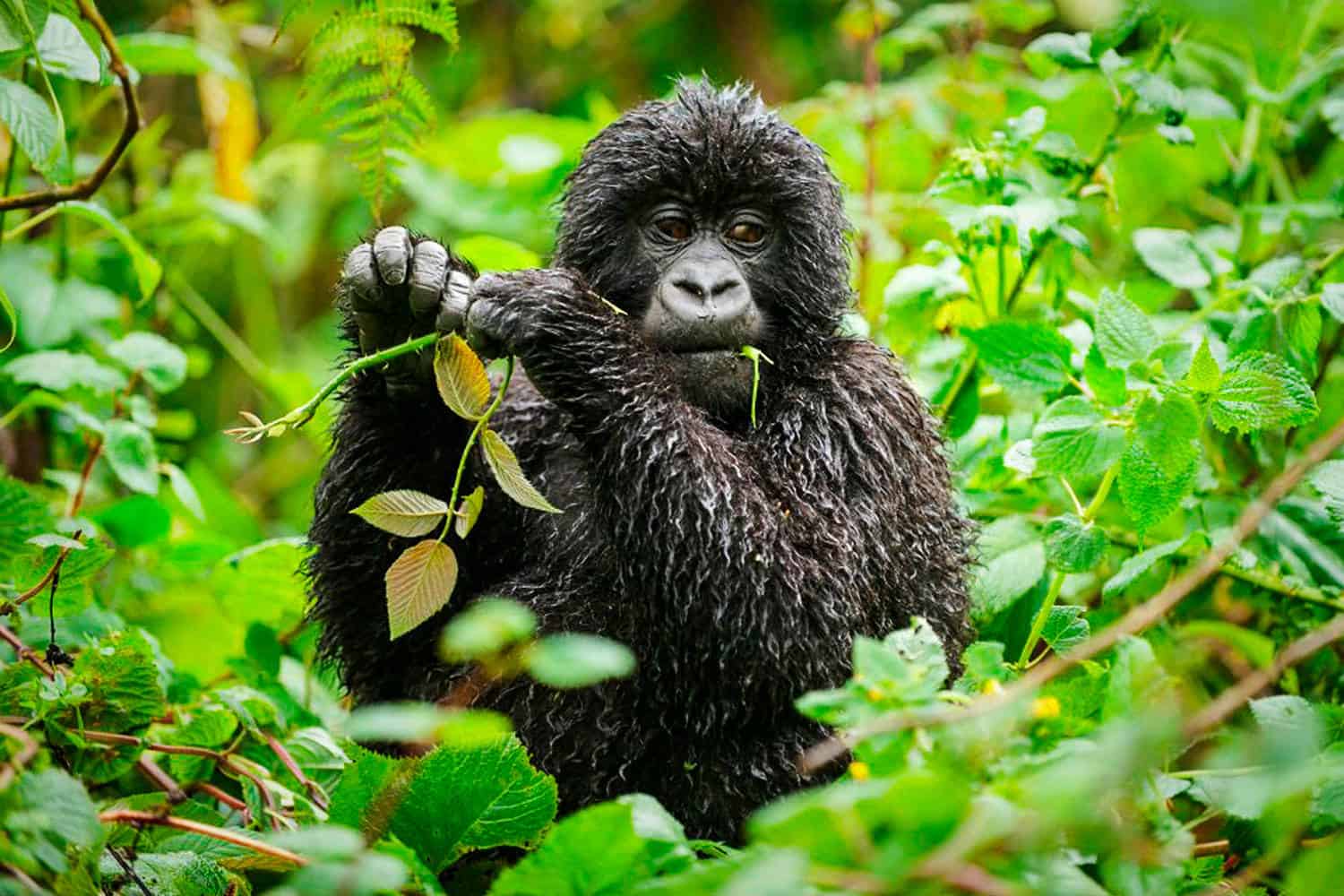 |
4. Which Sectors In Bwindi Are The Gorilla Families Seen?
Key Takeaways
- Buhoma sector for Mubare, Habinyanja, and Rushegura families
- Rushaga sector for Bikingi, Kahungye, Busingye, Bweza, and Shongi families
- Ruhija sector for Rukara (Kyaguriro A), Mukiza (Kyaguriro B), Bitukura, and Oruzogo families
- Nkuringo sector for Bushaho and Nkuringo families
Buhoma
The Buhoma sector is ideal for meeting the Mubare, Habinyanja, Rushegura, Katwe and Binyido groups. The Mubare family was first habituated to guests touring the region in 1993 with the habitation that started in 1991. This sector is also famous for the nature walks you can undertake to visit three of the most beautiful waterfalls in Bwindi Impenetrable National Park. You can also spend time with the Batwa community and visit Bwindi Community Hospital.- Mubare Gorilla Family
- Habinyanja Gorilla Family
- Rushegura Gorilla Family
- Katwe Gorilla Family
- Binyido Gorilla Family
Rushaga
Should you choose to begin your excursions from the Rushaga trailhead, you might encounter the Shongi, Kahungye, Bweza, Busingye, Bikingi (semi-habituated), Mishaya, Kutu or Mucunguzi groups. Not only does this locale have a large number of gorillas, but it’s also known for forest elephant sightings.- Shongi Gorilla Family
- Kahungye Gorilla Family
- Bweza Gorilla Family
- Busingye Gorilla Family
- Bikingi Gorilla Family (Semi-habituated)
- Mishaya Gorilla Family
- Kutu Gorilla Family
- Mucunguzi Gorilla Family
Ruhija
Guests staying over at the Ruhija sector may be able to visit the Bitukura, Oruzogo, Kyaguliro or Mukiza families. Other interesting activities that visitors to this sector can participate in include bird-watching and exploring the bamboo forests and wetlands nearby.- Bitukura Gorilla Family
- Oruzogo Gorilla Family
- Kyaguliro Gorilla Family
- Mukiza Gorilla Family
Nkuringo
If you’ve booked accommodations in the Nkuringo sector, you can expect to meet the Nkuringo, Bushaho or Christmas gorilla families. While you are in the area, you’ll want to take the time to enjoy the Buniga Forest Walk and mingle with the Batwa tribe that lives here, all while enjoying spectacular views of the Virunga Volcanoes.- Nkuringo Gorilla Family
- Bushaho Gorilla Family
- Christmas Gorilla Family
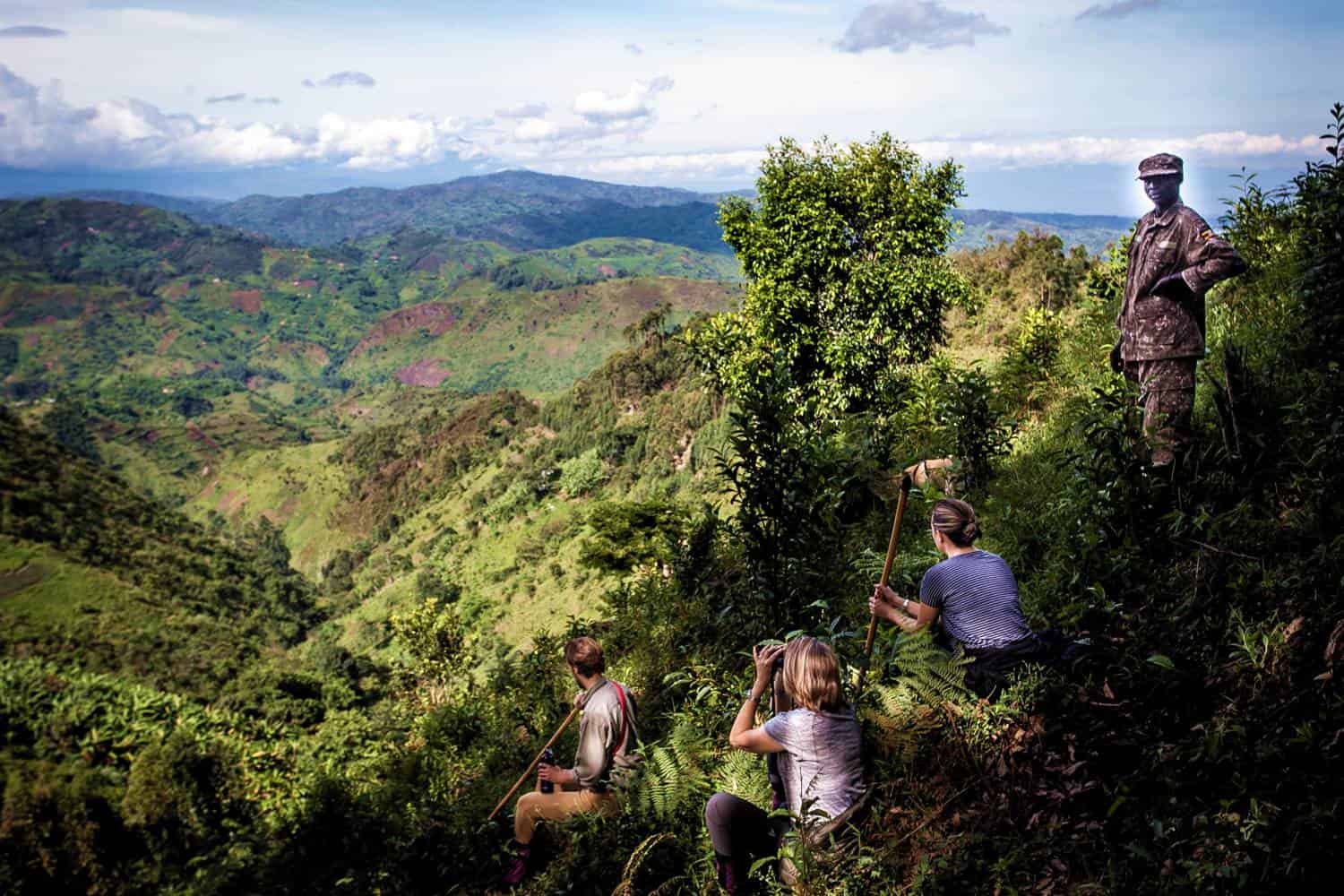 |
5. What Kind Of Fauna (Animals) & Flora (Vegetation) Exist In Bwindi?
Key Takeaways
- Park assigned the UNESCO World Heritage site status
- 10 species of primates including rare mountain gorillas, L'Hoest's monkeys, red colobus monkeys, and others
- 120 species of mammals including small predators and herbivores
- Over 400 plant species, 104 types of ferns, and 163 kinds of trees
- 200 kinds of butterflies, 28 types of reptiles, 28 kinds of amphibians, and 27 kinds of frogs
- 350 bird species including 23 native to the Albertine Rift Valley and 7 IUCN red data listed species
It may interest you to learn that Bwindi Park also has species that have not received scientific names. There are over 200 kinds of gorgeous butterflies present here, as well as 28 types of reptiles, 28 kinds of amphibians, and 27 kinds of frogs. And be sure to spare the time to meet the human residents, too – the local people who live just outside the reserve.
Bwindi ’s rich diversity includes a superb variety of birdlife in Uganda that you may be able to see on hikes designed for bird-watching. In all, the region supports more than 350 species of birds, of which 23 are native to the Albertine Rift Valley. These include 7 of the IUCN red data listed species, the blue-headed sunbird, and the short-tailed warbler. The prime bird-watching areas are along the Buhoma Waterfall Trail, as well as the bamboo forests and Mubwindi Swamp Trail in the Ruhija sector. Here, you can see the white-tailed crested flycatcher, Rwenzori batis, red-faced woodland warbler, yellow-streaked greenbul, francolin, chestnut-throated apalis, western green tinkerbird, cinnamon-chested bee-eater, and various others.
Visitors should also keep a sharp eye out for the red-headed bluebill, African blue and white-tailed blue flycatchers, common bulbul, and African emerald cuckoo, all of which thrive in Bwindi Impenetrable National Park. Lucky bird-watchers may even get a chance to see the elusive Shelley’s crimsonwing and African green broadbill. Ornithologists say that the reserve has 76 of the 144 species of the Guinea-Congo forest biome, along with 68 of 86 of the Afro-tropical highland biome varieties.
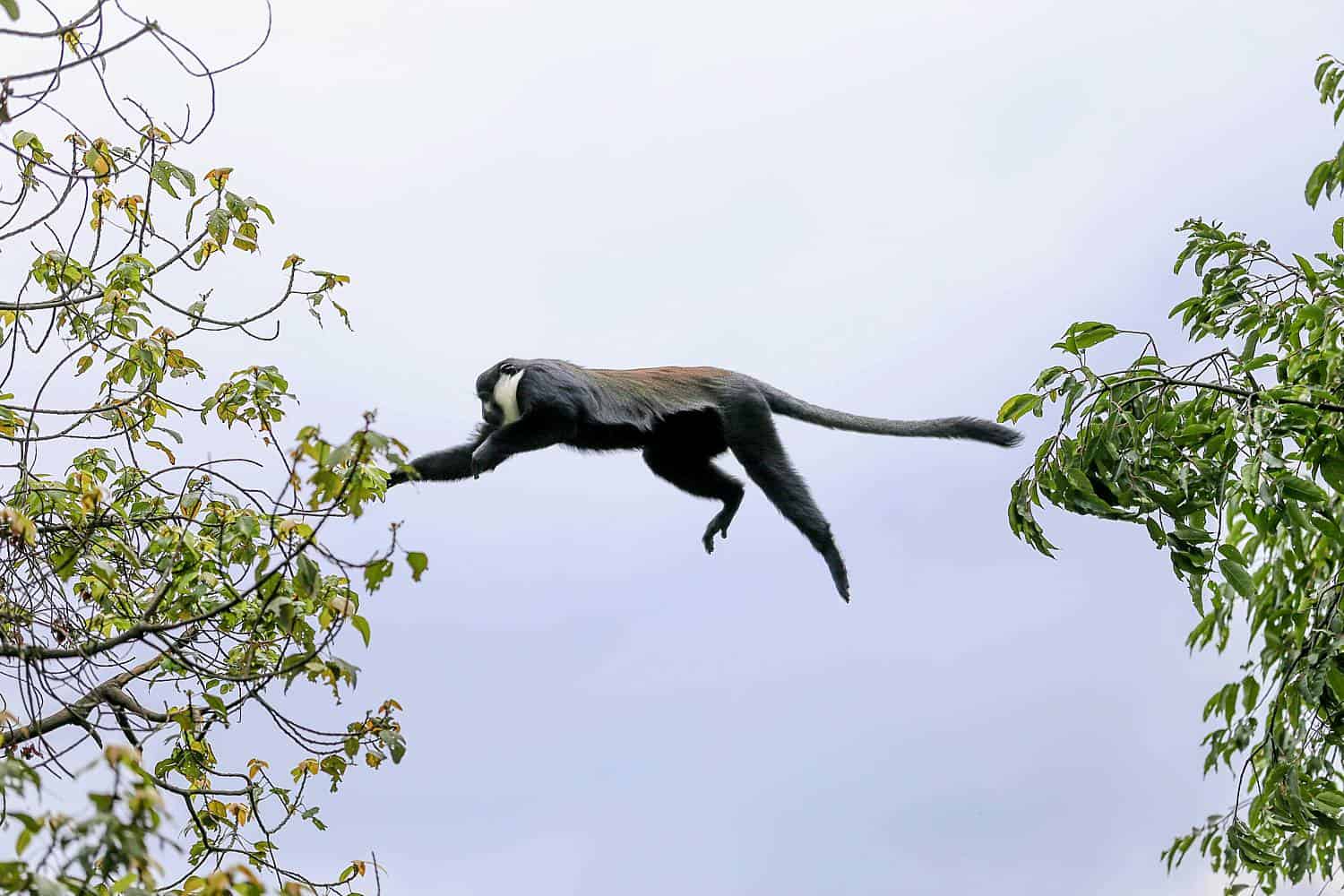 |
6. History Of Bwindi & Its Ancient Lore
Key Takeaways
- Getting insights into the origins of the park’s name, from the Mubwindi Swamp, “mubwindi bwa nyinamuraki”
- Ancient mysticism and folklore that relates the story of the sacrifice of Nyina Muraki
- Originally established in the year 1932 combining Kayonza Crown Forest Reserve and Kasatora Crown Forest Reserve covering an area of 298 square kilometers
- Gazetted status assigned in the year 1991 combining Impenetrable Central Forest Reserve, Rwenzori Mountains Reserve, and Mgahinga Gorilla Reserve
- Specifically designed for the conservation of the last natural habitat of the rare mountain gorillas
About 100 years ago, so the story goes, a family traveling from the Kisoro area was trying to cross a swamp that seemed impossible to traverse. After praying to the spirits of the swamp for guidance, they were asked to sacrifice their loveliest daughter in exchange for safe passage. Faced with the prospect of returning to the south, the family opted to drown their daughter, Nyina Muraki, so that they could cross safely. As people learned about their sacrifice, they began to call it “mubwindi bwa nyinamuraki,” which translates as “dark place of nyina muraki.”
Fast forward to more recent times: Bwindi came into being in 1932 and received gazetted status in 1991. At the time, the reserve was composed of the northern block, also called the Kayonza Crown Forest Reserve, and the southern block, which was dubbed the Kasatora Crown Forest Reserve. Combined into the Impenetrable Central Crown Forest in 1942, the reserve covered a total area of 298 square kilometers.
Eventually, in 1991, Impenetrable Central Forest Reserve, Rwenzori Mountains Reserve, and Mgahinga Gorilla Reserve merged to become Bwindi Impenetrable National Park, with a total combined area of 321 square kilometers. The park was specially designated as a protected mountain gorilla viewing destination for tourists in April 1993, and even today is operated as a forest reserve and wildlife sanctuary under the management of the Uganda Wildlife Authority. Perhaps the only downside of instituting the park in its present status is the effect that had on the Batwa Pygmy people, who have been removed from the forest boundaries and are no longer allowed to use its resources as a means of livelihood.
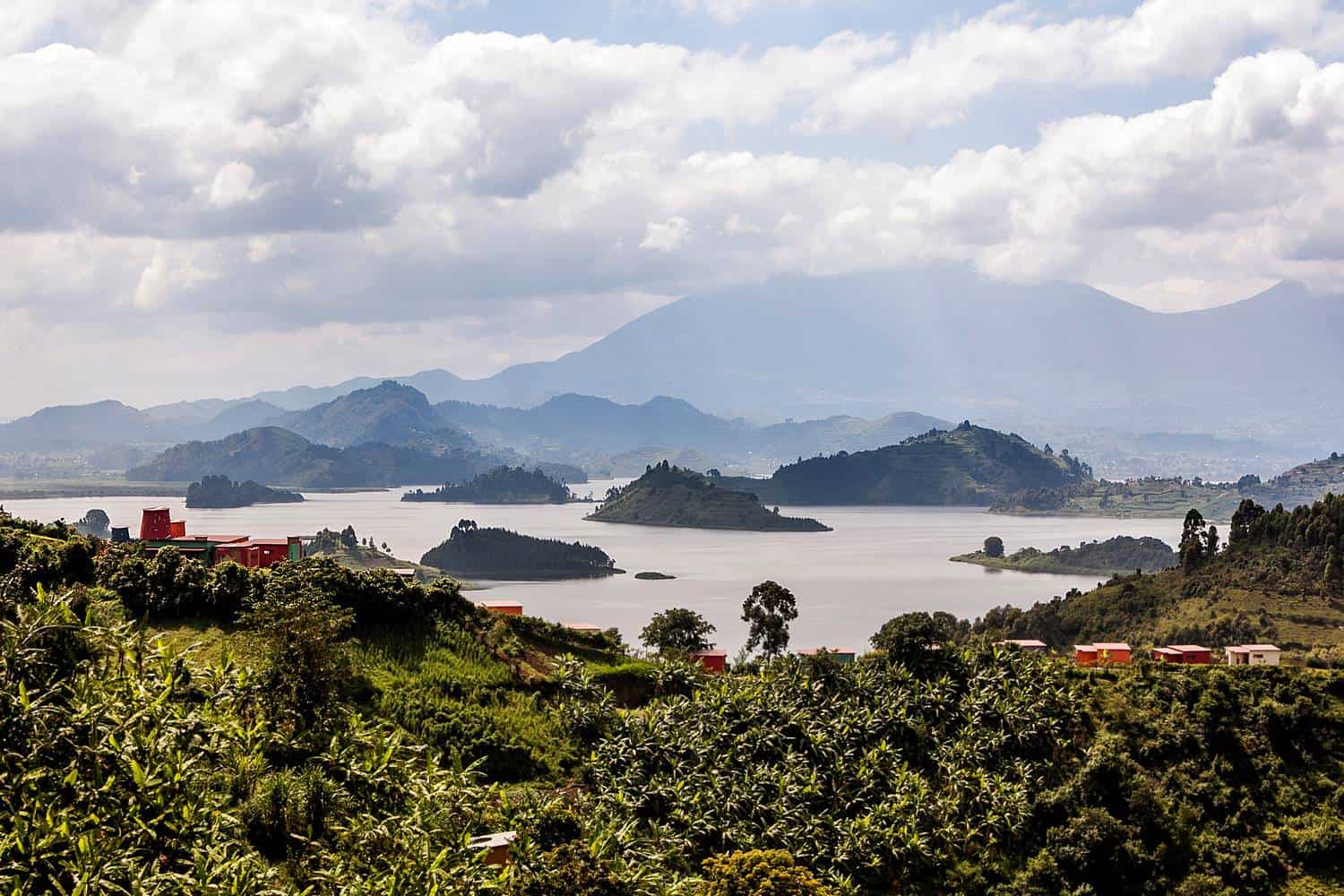 |
Select Our Highly Recommended & Unique Designed Uganda Safaris & Gorilla Treks That You Want To Tour Visit & Experience
What Gorilla Safari Attractions & Tour Activities To Experience During Your Bwindi Visit?
Key Takeaways
- Exploring the habitat of the rare mountain gorillas that are found in these lofty mountains
- Nature walks through the forest over the Munyanga River Trail, Rushura Hill Trail, Waterfall Trail, Muzabajiro Loop Trail, and Bamboo Trail to view the incredible diversity of flora and fauna
- Possibility of spotting many of the 350 species of birdlife that exist in Bwindi
- Cultural interaction with the Batwa Pygmy people to learn about their sustainable lifestyle
- Unique mountain bicycling tours with Ride 4 A Woman program
As you follow the trails through Bwindi National Park, your safari guide will introduce you to the many wonderful varieties. You may also be able to spot some of the 350 species of bird life present here, along with a wide range of insects, amphibians, reptiles, and mammals if you are lucky. Your safari guide will also spearhead your nature walks for you along various trails in the forest, each of which delights hikers with a new aspect of the reserve’s diverse landscapes.
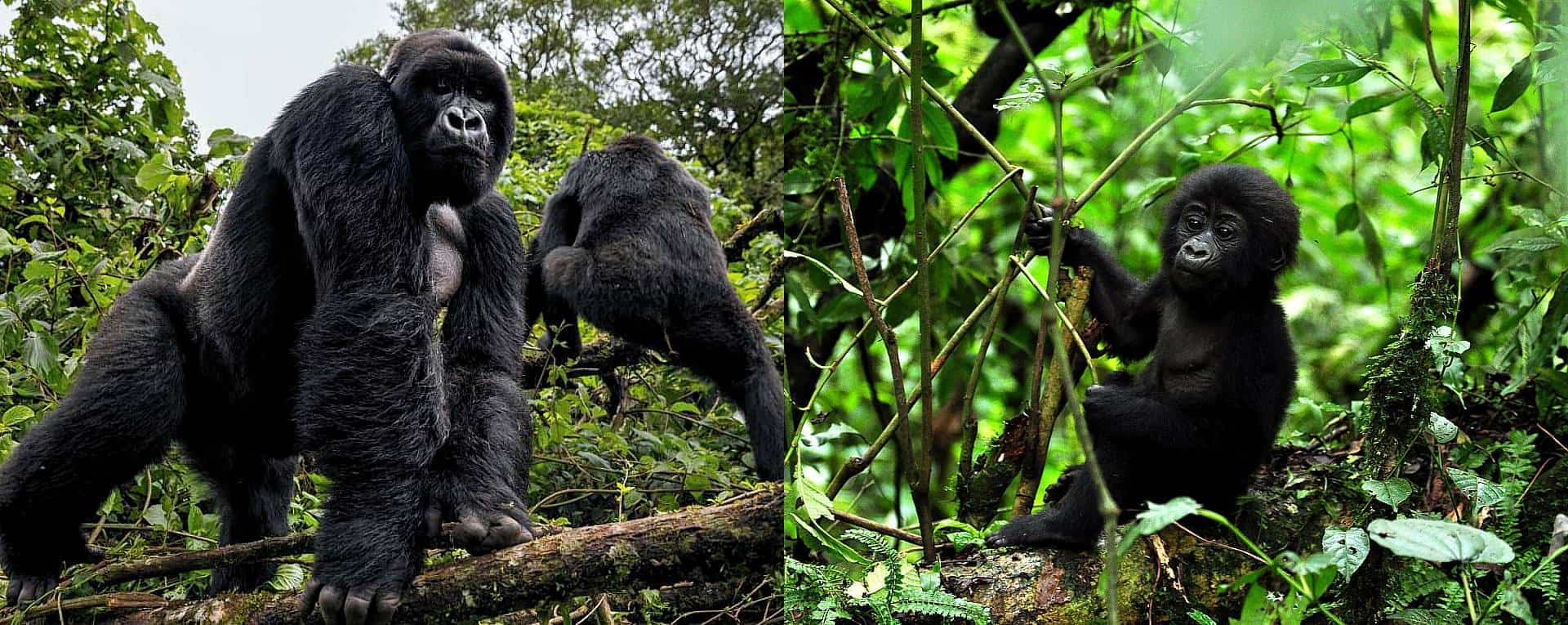 |
There’s more to a visit to Bwindi Impenetrable National Park than flora and fauna. For many, the opportunity to visit the local communities living on the outskirts of the park is another highlight. Your cultural trip in Uganda will no doubt be enriched by a glimpse of their traditional living styles, which are intertwined with – and spring from – a deep respect for nature. You’ll gain an understanding of the Batwa Pygmy people’s hunter-gatherer way of life and learn how they draw on indigenous plants for medicine. You’ll see how they use the forest resources for food, art, and crafts, taking only what they need and wasting nothing. Those interested in legends will enjoy hearing about the ancient mysticism and historical lore of their environs.
A visit to Bwindi Impenetrable National Park offers various recreational opportunities, as well – all the better to enjoy this fabulous environment. For instance, you could enjoy a canoeing trip to explore Lake Mutanda, or perhaps opt for a mountain-bike cycling tour. Hiring a bike to ride into the Buhoma sector helps support the ‘Ride 4 a woman’ program, which empowers local women by helping them learn new skills so they can better care for their families and improve their lives.
Watch Video On Bwindi Gorilla Trekking Experiences
Our Top 6 Safari Activities In Bwindi - Things You Can Do & See
Activities Content - Start Here
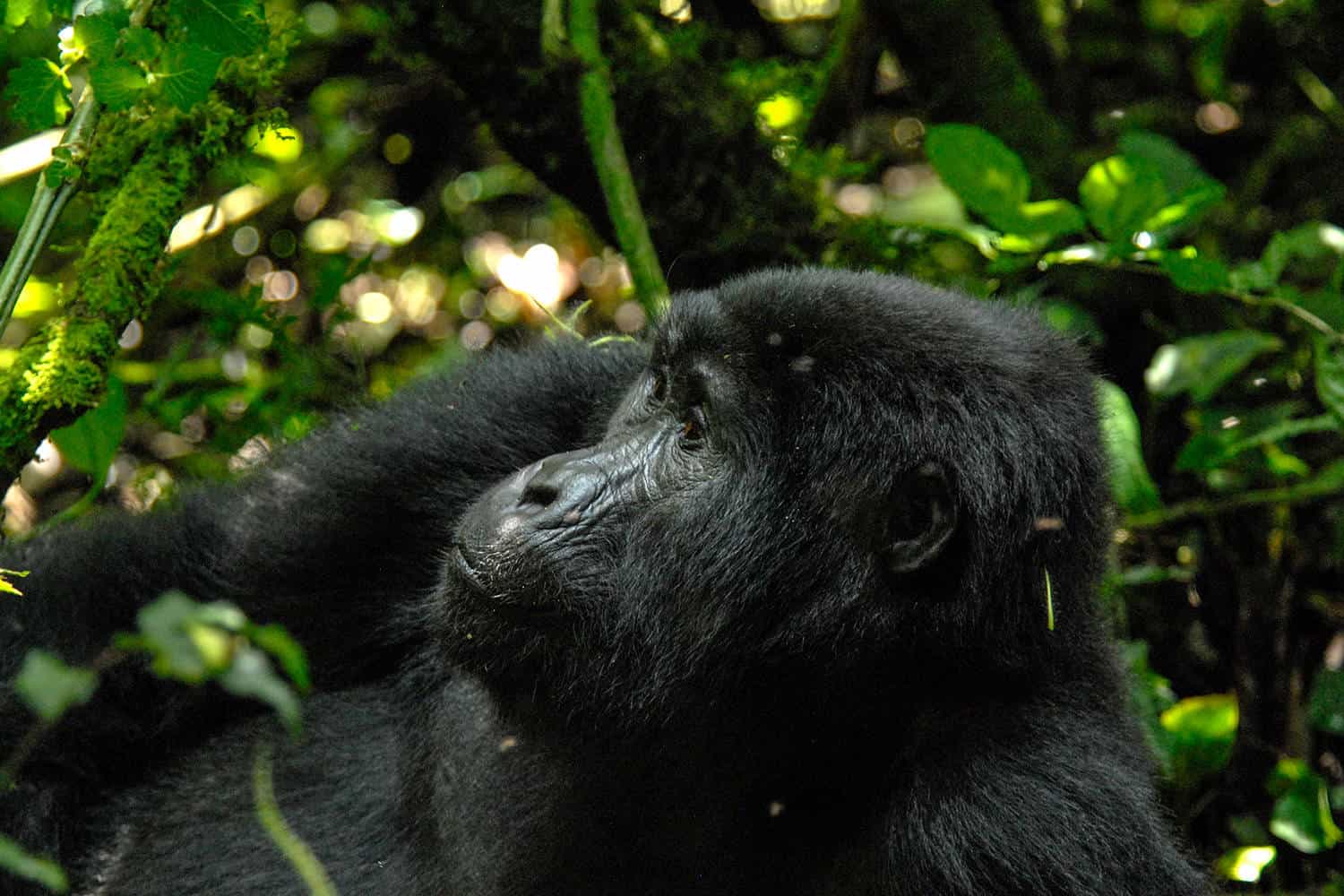 |
1. Gorilla Trekking Safari - The Highlight Of Your Bwindi Tour In Uganda
Key Takeaways
- Trekking through the forest to locate the gorilla family allotted to you
- Over 450 individuals found in the Bwindi Impenetrable Forest living in 19 habituated gorilla families
- Each family lead by a massive silverback male possibly weighing more than 200 kg (440 lbs)
- Only one group of 8 visitors allowed to visit a gorilla family per day
- Opportunity to learn about the ongoing conservation efforts to protect these gentle giants
The precious hour you are allowed in their company – which is for the protection of the gorillas in Uganda – is likely to seem inadequate at first sight. But if you’re like most safari visitors, you will come away enthralled, awed, and fascinated by the experience of watching their behavior in the wild. Watch the giant family patriarch, known as a silverback, keeping a close eye on his family and leading them away, should he sense even the smallest danger. Marvel at the gentleness and intelligence that these magnificent apes display.
To protect the gorilla families and their habitat in Bwindi Impenetrable National Park, just one group of 8 visitors is allowed in the company of each family per day. In all, only 160 permits are issued in Bwindi on any given day tracking one of the 19 habituated families and 1 semi-habituated family, which helps minimize the gorillas’ exposure to humans and limit the possibility of illnesses being communicated to the animals. This program serves the purpose of educating people touring Uganda on the importance of conserving these rare creatures, as well as raising funds that will support ongoing research and protection activities in Bwindi Impenetrable National Park, one of just three remaining havens left in the world for mountain gorillas.
Ruhija
- Bitukura Gorilla Family
- Oruzogo Gorilla Family
- Kyaguliro Gorilla Family
- Mukiza Gorilla Family
Buhoma
- Mubare Gorilla Family
- Habiyanja Gorilla Family
- Rushegura Gorilla Family
- Katwe Gorilla Family
- Binyido Gorilla Family
Nkuringo
- Nkuringo Gorilla Family
- Bushaho Gorilla Family
- Christmas Gorilla Family
Rushaga
- Mishaya Gorilla Family
- Nshongi Gorilla Family
- Kahungye Gorilla Family
- Bweza Gorilla Family
- Busingye Gorilla Family
- Bukingi Gorilla Family (Semi habituated)
- Kutu Gorilla Family
- Mucugunzi Gorilla Family
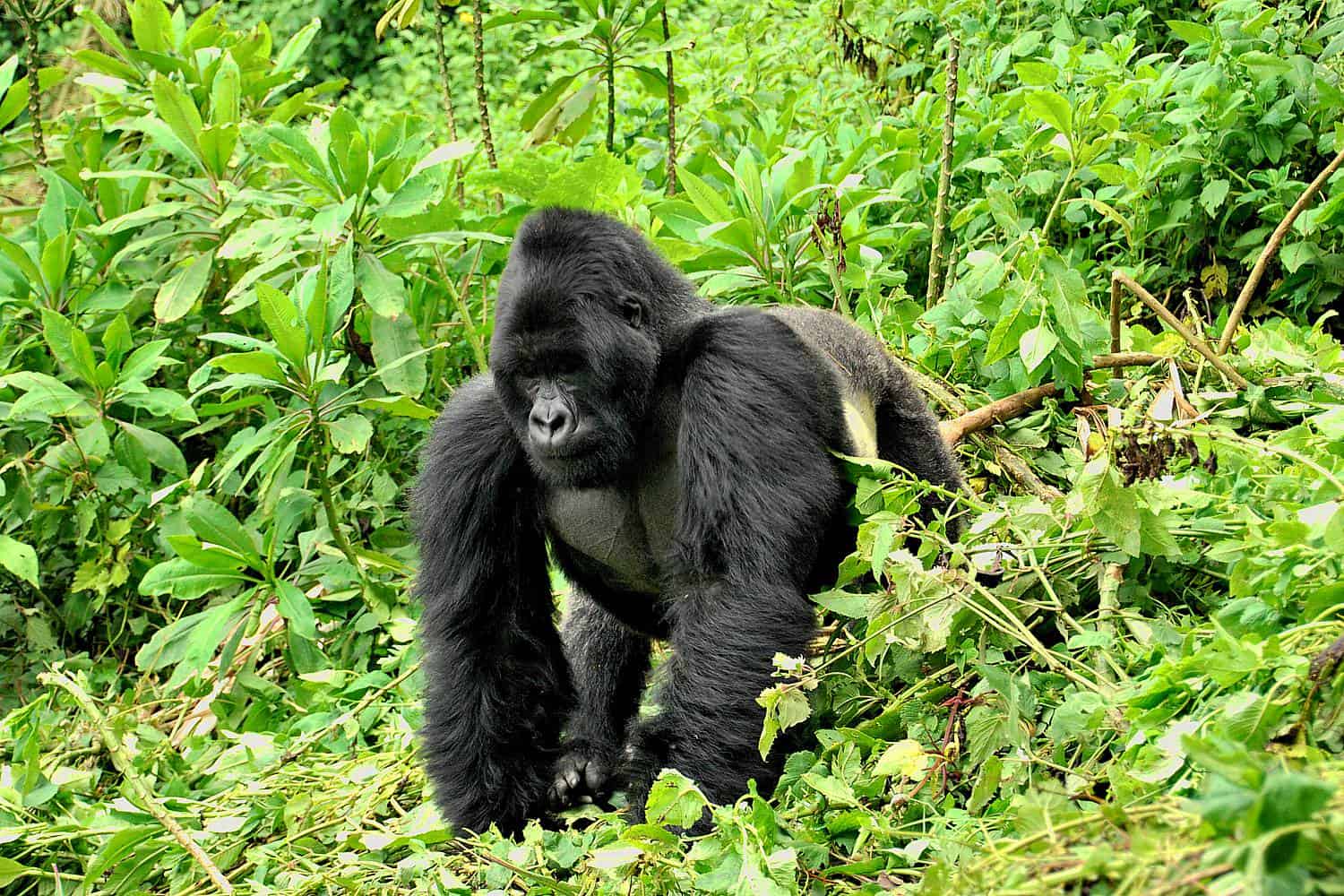 |
2. Birdwatching Tours In Bwindi Forest
Key Takeaways
- Habitat of around 350 avian species of which 23 are endemic to the Albertine Rift Valley
- Possibility of sighting 100 or more varieties during bird watching excursions
- Visiting prime birding locales like Ruhija and Buhoma
The prime African birdwatching safari locales in Bwindi Forest are Buhoma and Ruhija. Here, you may be able to see and photograph species such as the dusky twinspot, montane double-collared sunbird, yellow-eyed flycatchers, Lagden’s bush shrike, dwarf honeyguide, African green broadbill, Chaplin’s flycatcher, and Oberlander’s ground thrush, making your tour holiday truly memorable.
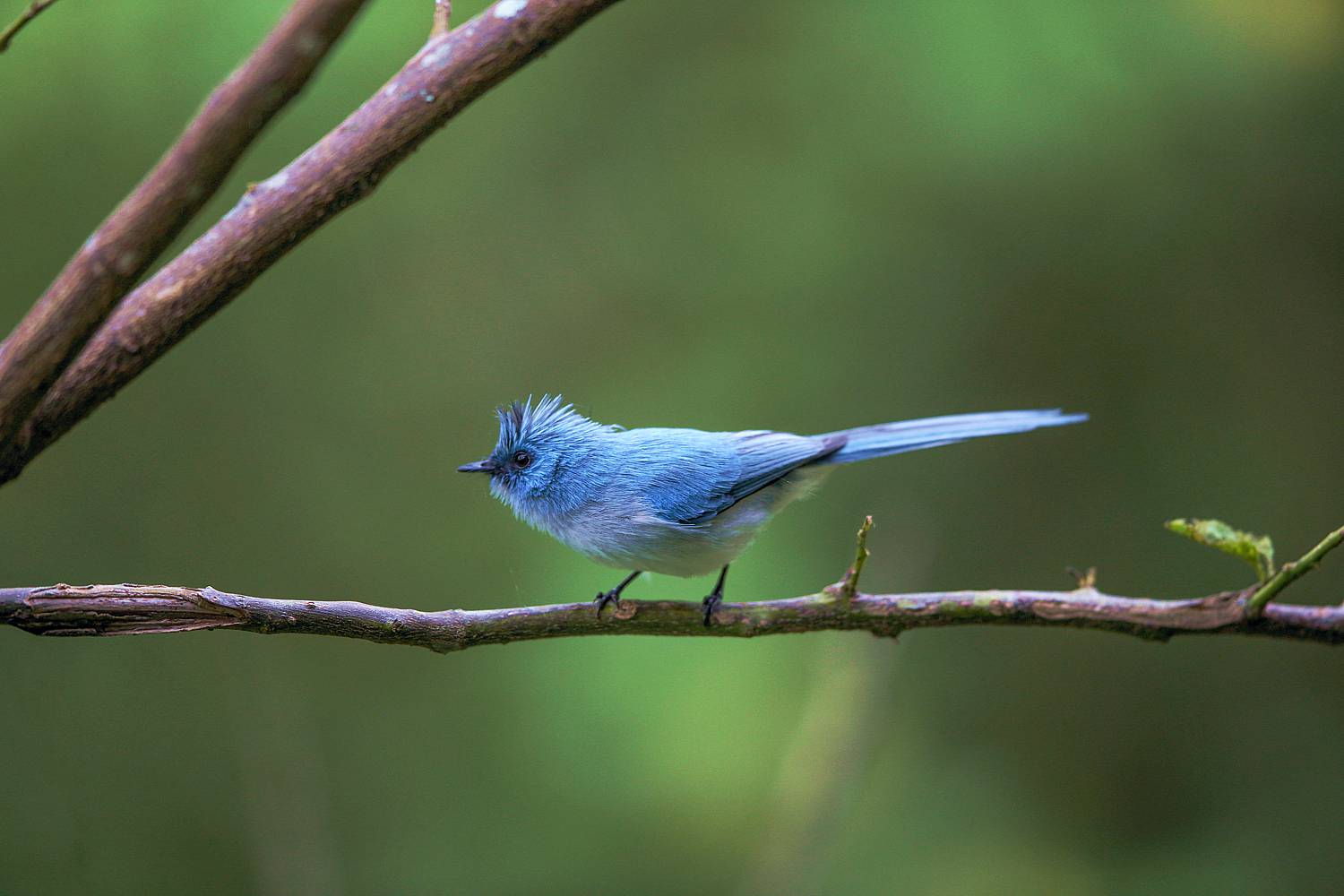 |
3. Nature Hiking Excursions Through Bwindi Trails
Key Takeaways
- Oldest living forests in the world estimated to dating back to over 25,000 years
- Home to 120 mammal species, 51 reptiles, 88 moths, 310 butterflies, 350 birds, 10 primates, and 400 plan species
- Following the Kajembehajambe Trail for bird watching or viewing a fabulous waterfall or Munyanga River Trail for visiting the Bizenga Creek
- Taking the Waterfall Trail, Rushura Hill Trail, or Muzabajiro Loop Trail each offering different experiences
- Other options like River Ivi Trail, Guest House Nature Hill Trail, and Bamboo Trail
The Rushaga locale allows you to explore the Kajembehajambe Trail, which can be completed in 3 to 5 hours. Two of the trails will take you through forests, while the third leads to a fabulous waterfall. You can also go birdwatching from Rushaga, a tour that lasts about 6 hours. The Buhoma and Nkuringo gates both act as bases for a wide range of hiking expeditions. If you prefer a short stroll along the river bank, try the Munyanga River Trail, which takes only about 15 to 20 minutes and loops around Bizenga Creek.
As the name suggests, the Waterfall Trail in Bwindi Park takes you to see cascades as high as 33 meters. The trail takes about 3 hours to walk, following a half-complete road to Kisoro, with delightful sightings of monkeys and birds along the way. The Rushura Hill Trail takes about the same amount of time but is steeper and a bit more challenging. It takes you to the highest spot in the Buhoma region, Rushura Hill. This walk provides scenic vistas of the Rwenzori Mountains, Lake Edward, the Virunga Volcanoes, and the Western Rift Valley. The Muzabajiro Loop Trail is moderately steep and also takes 3 hours. Choose this excursion for incredible views and sightings of age-old ferns, as well as other primates.
Yet another interesting trail in Bwindi Impenetrable National Park is the River Ivi Trail, which leads you to the southern rim of the reserve and takes about 6 hours to complete. This safari holiday expedition will treat you to encounters with monkeys, various bird species, and duikers. The hour-long Guest House Nature Trail and the 6-hour Bamboo Trail are possible explorations that begin at Ruhija.
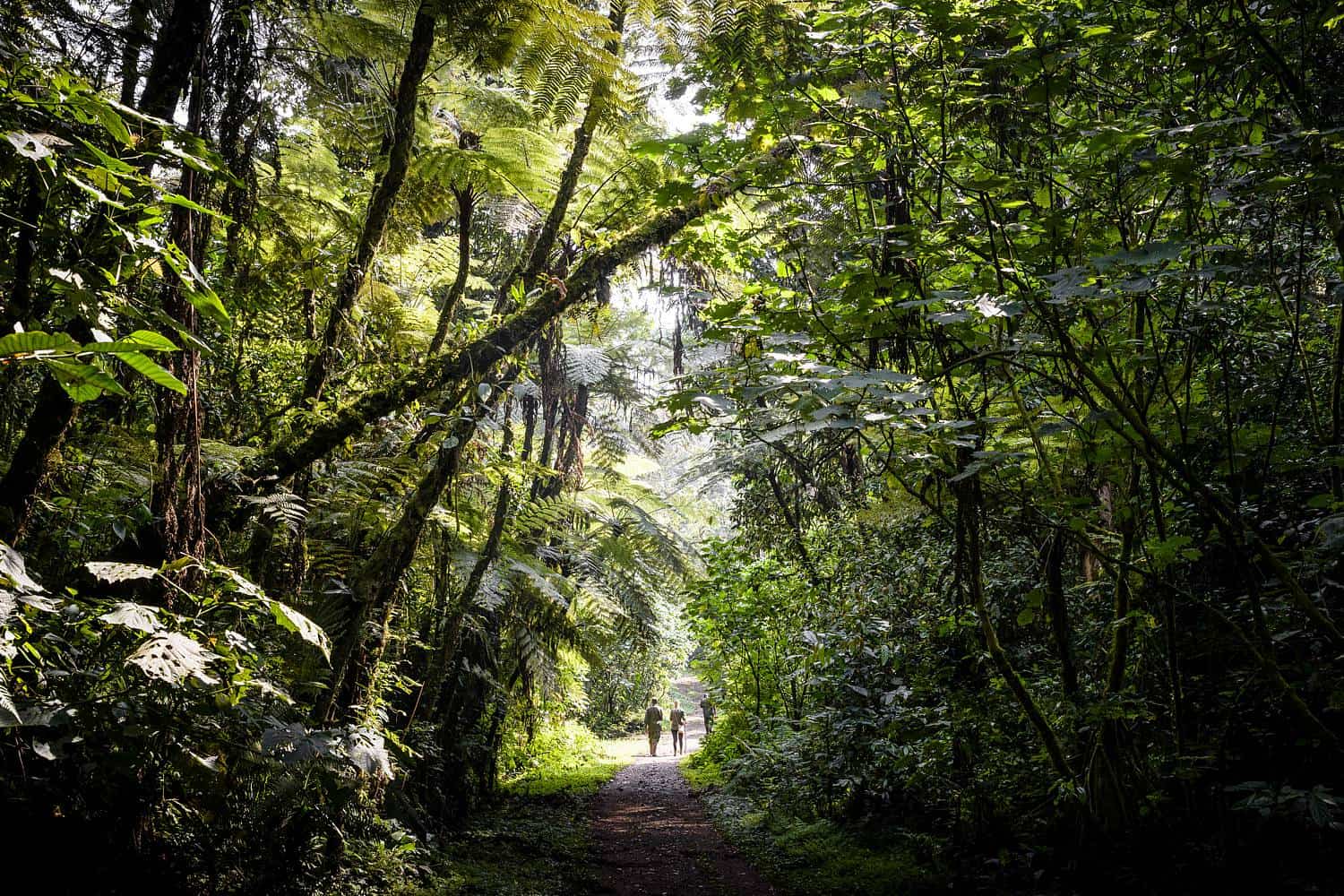 |
4. Cultural Interactions & Tour Visits To Tribal Communities In Bwindi
Key Takeaways
- Visiting the communities of the Batwa and Bakiga people, original inhabitants of the park
- Understanding the traditional hunter-gatherer lifestyle in the Buniga Forest
- Participating in cooking activities and music and dance performances
- Shopping at the souvenir store to buy handicrafts in support of local artisans
- Sampling authentic ground coffee at the village cafe
The Batwa Pygmy people, also called the “Keepers of the Forest,” inhabit the Bwindi and Mgahinga Forests of Bwindi Impenetrable National Park. A cultural safari tour will take you to a village where you can learn how to make alcohol from banana leaves and medicines from plants. Each trip takes around 3 hours and also allows you to participate in cooking with forest produce, including mushrooms, wild honey, and yams. You will be treated to music and dance performances given by women and orphaned children, and perhaps even get a chance to try hand-ground coffee in the village coffee shop. Before you leave, stop by the souvenir store to buy small, handmade mementos of your stay in the reserve.
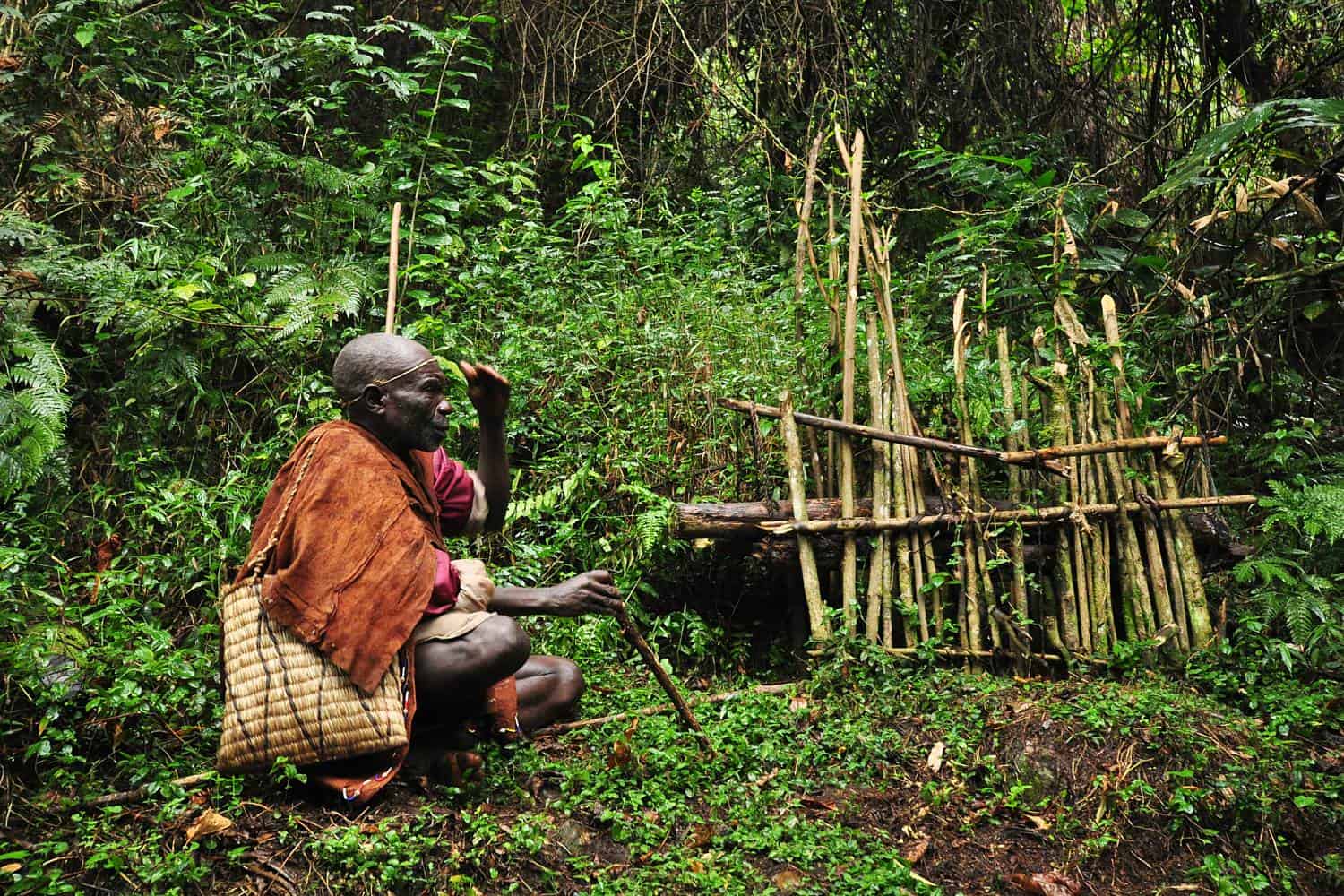 |
5. Mountain Bike Rides In The Buhoma Sector
Key Takeaways
- Guided mountain bike rides founded by Rubalema Denis and Habasa Evelyne sustainability program called Ride 4 A woman
- Participating in programs designed to support and provide a livelihood to the women of the Buhoma Village
- Exploring the forests aboard a bicycle that you can hire for 3 hours
You can rent a bicycle for 3 hours and cycle safari the forest and communities in the company of an expert guide. The community will also provide helmets for your safety. Since 2012, a team of Australians has been working to expand the bicycle program. They’ve set up additional initiatives that train women in English, sewing, bicycle repair, making crafts, and weaving textiles.
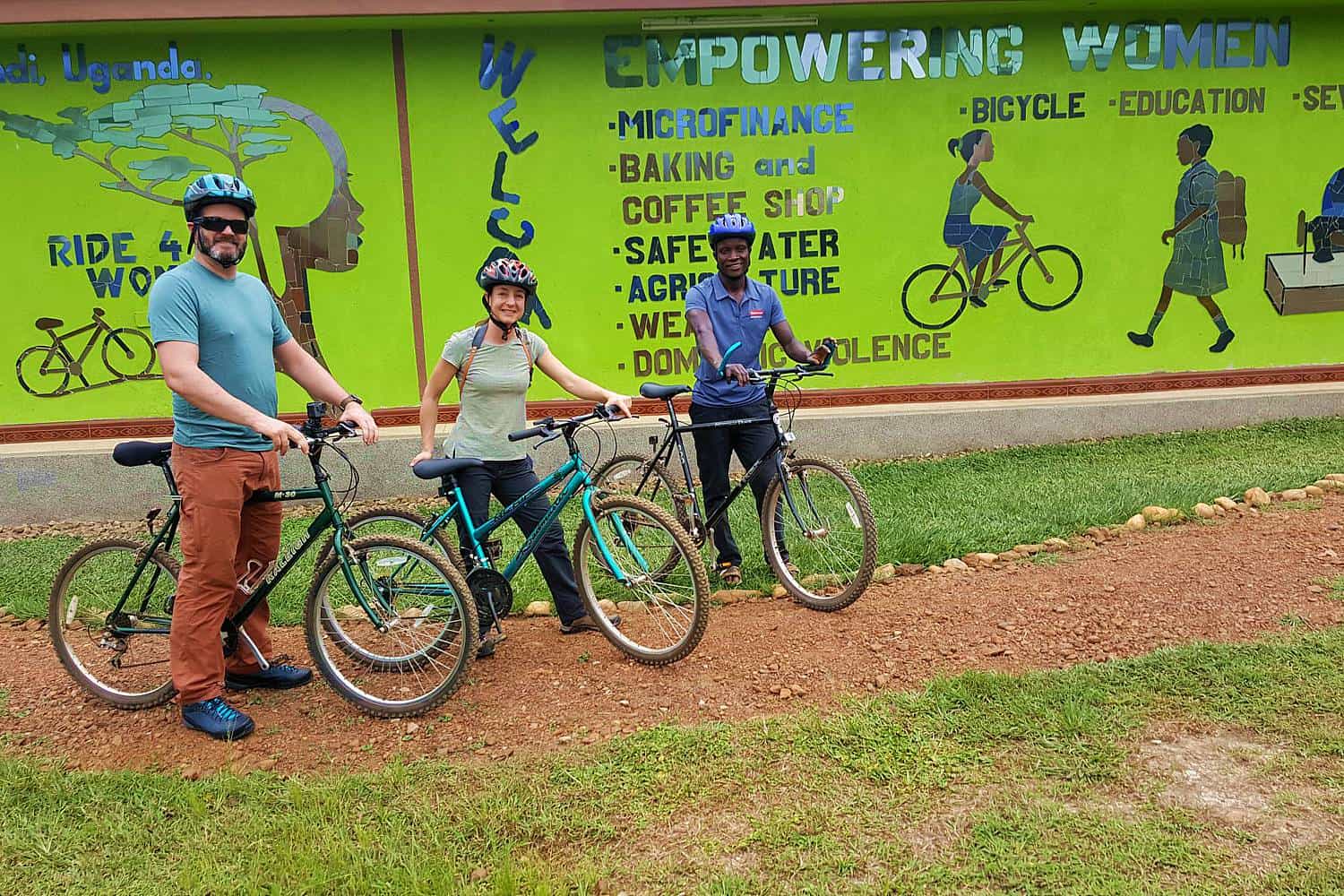 |
6. Gorilla Habituation Experience In Bwindi
Key Takeaways
- Understanding the habituation process where individual members are given time to become accustomed to the presence of humans
- Spending time with researchers to learn about their conservation activities
- Spending 4 hours with a gorilla family undergoing habituation
- Excursion permits priced at $1500 per person
- All proceeds go toward funding further research and preservation programs
Participate in Tracking Specific Families Undergoing Habituation
Bwindi Impenetrable National Park has a total of 19 gorilla families, which are accessible from four different areas i.e Buhoma sector, Ruhija sector, Rushaga sector, or Nkuringo sector. Of the 19 families, one is only semi-habituated – the Bikingi group, which lives in Rushaga. These groups form part of the Gorilla Habituation Experience program, which was initiated in 2016 by the Uganda Wildlife Authority. Taking part in this program is a different experience from a regular gorilla trekking trip in Bwindi Impenetrable National Park. Being a unique activity, the park permit costs $1500 per person.Understanding the Habituation Process
Should you sign up for the Gorilla Habituation Experience, you will be assigned to a particular group of 4 guests at 7:30 am start time from the trailhead. You should be prepared to navigate very difficult terrain on a full day experience. If you are not fit or have a heart condition, do not attempt to book the Gorilla Habituation Experience. It is very strenuous as it involves trekking for many hours including ascending and descending the mountains of Bwindi Forest. However, the hard work will pay off. You will be able to spend around 4 hours with the gorilla group that is undergoing the habituation process, an activity available only in Bwindi Park (best time to go). Watch and photograph the gorillas as the adults groom one another, look for food, and observe their babies playing together under the watchful of the dominant silverback. You will also develop an understanding of the rangers dedication and the challenges they face when habituating the animals so that adventurous safari vacationers can spend time with them.During the habituation process, the park rangers may conduct a few trial encounters with the guests who are strangers to the gorillas. If the gorilla family accepts its visitors and is comfortable with them, the ranger and guides will allow more interaction with them. Note that the guides accompanying you may choose to end the experience early if the gorillas start to show signs of being frightened, hide, or behave in a way that is different from normal. The earnings from these visits fund further research and conservation programs that can better protect the famed gorillas. Take part in a typical day in the life of a gorilla in the misty forests. You will find that it is an immersive feeling like no other – and one that you will remember and cherish forever.
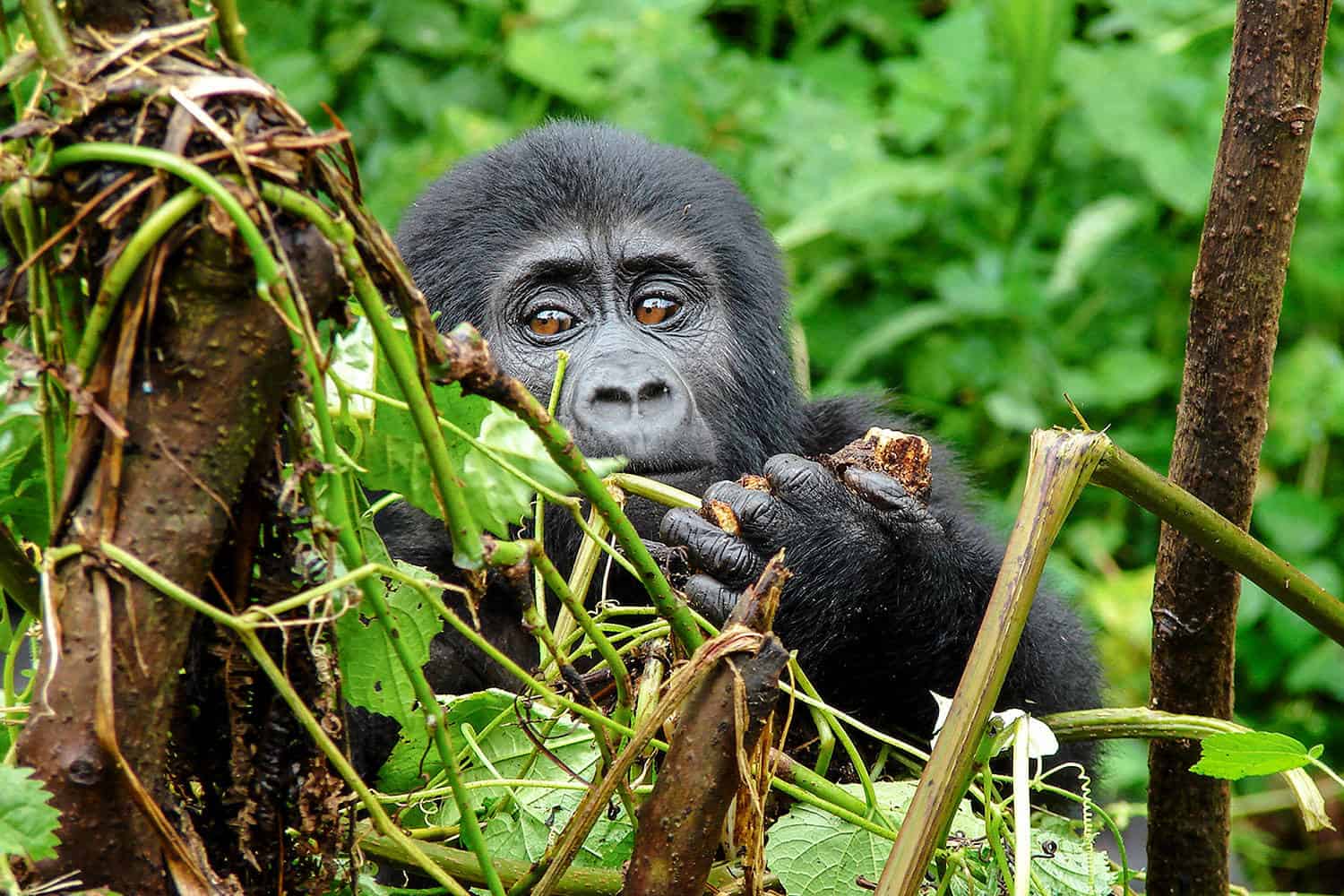 |
Select Our Highly Recommended & Unique Designed Uganda Safaris & Gorilla Treks That You Want To Tour Visit & Experience
|
Bwindi Park Rating By AfricanMecca
4.1
Star
Wildlife Exclusivity Activities Accommodations Authenticity
Users
(0 votes)
0
|
Learn More On AfricanMecca Safari Tier Ratings & Experiences |
Write A Trip Review On Bwindi In Uganda
Read More +
WHERE & BEST PLACES TO STAY IN BWINDI
Bwindi has varied accommodations, from the forest luxuries of Sanctuary Gorilla Forest Camp, Clouds Mountain Gorilla Lodge and Bwindi Lodge. The deluxe options are Buhoma Lodge and Mahogany Springs.
Read More +
BWINDI SAFARI ACTIVITIES & TOUR ATTRACTIONS
The primary activity at Bwindi Park is gorilla trekking including the habituation experience. Other tours are birdwatching excursions, forest waterfall hikes, Buhoma mountain biking, Batwa cultural encounters etc.
Read More +
BEST TIME TO VISIT BWINDI
Given that the main focus of your safari in Uganda is likely to be the mountain gorillas, the best time to visit Bwindi is in the long dry season, which begins in June and continues through July and August.
Read More +
GORILLA FAMILY GROUPS IN BWINDI
Should you plan a gorilla viewing safari to Bwindi Impenetrable National Park, you will learn that the park has twenty resident gorilla families that are habituated to the presence of humans.
AFRICANMECCA REVIEWS
What are our Customers saying about us? READ MORE REVIEWS
AfricanMecca Safaris offers incredibly knowledgeable and skilled services! Our travel arrangements for 2 months of volunteering with TEACH Rwanda in country were made quickly and economically. Honored to work with Raza!
Janet Brown - TEACH Rwanda Founder - United States
I just returned from a month in Africa, specifically Rwanda & Kenya. I am left breathless with my experience. AfricanMecca Safaris coordinated the entire trip for me and left no detail, nothing for me to do.
Carol Bobb - Pennsylvania, United States
AfricanMecca Safaris created a remarkable honeymoon tailored to our interests and desires. The quality of service and delivery of experience was unsurpassed. I highly recommend AfricanMecca Safaris to honeymooners, families, or any traveler.
Noorin & Jason Nelson - Maryland, United States
I booked my safari holiday through AfricanMecca. They were the most helpful company I have ever dealt with and I work within the travel industry. I had the most amazing time. The holiday went as clockwork with no hitches anywhere.
Shelley Roberts - Hemel Hempstead, United Kingdom
This is to let you know my guests, The Bryant's, had a wonderful time on the trip Samburu, Masai Mara/Kenya, Chobe/Botswana & Victoria Falls/Zambia. Everything was perfect! Thank you.
Christine Milan - MT Carmel Travel - Connecticut, United States
We have returned from our African adventure and would like to thank you very much for your part in making this such a wonderful experience. We were lucky enough to time the Great Migration from the Serengeti, which was amazing.
Denise Paterson - Belmont, Australia
Rwanda was amazing. The accommodations, food, and guides AfricanMecca arranged were great. Raza also helped us through the complicated process of getting permits for gorilla trekking. AfricanMecca is a fantastic company to work with.
Stephanie Weir - United States
EAST AFRICA SAFARI BOOKING TRIP IDEA FOR BWINDI IN UGANDA
When visiting Bwindi Park for your gorilla safari trek, we recommend combining it with Queen Elizabeth, Murchison Falls, and Kibale (chimpanzee safari) alongside your city tour visits of Kampala and Entebbe.
You may optionally extend out to other wilderness areas such as Mgahinga to track down golden monkeys and gorillas in the same park, Jinja for whitewater rafting on the Nile River, and Semliki, Lake Mburo or Kidepo for an offbeat wildlife tour.
You can end your vacation on the beach at Lake Victoria or even extending out to the exotic spice island of Zanzibar or Lamu, or even Mombasa.
Best Safari Planning Ideas & Trip Experiences For Uganda
Below are guide references on how to plan each of the below safari experience in Uganda. Alternatively, go to the summary section for a quick overview of each trip planning experience.1. How To Plan Uganda Safari Trips? (Summary)
2. Wildlife Safari Trip Planning Guide For Uganda
3. Private & Tailor-Made Safaris Trip Planning Guide For Uganda
4. Honeymoon Safaris Trip Planning Guide For Uganda
5. Family Safaris Trip Planning Guide For Uganda
6. Luxury Safaris Trip Planning Guide For Uganda
7. Photo Safaris Trip Planning Guide For Uganda
8. Cultural Safaris Trip Planning Guide For Uganda
9. Gorilla, Chimpanzee & Primate Safaris Trip Planning Guide For Uganda
10. Hike, Trek & Bush Walk Safaris Trip Planning Guide For Uganda
11. Birding Safaris Trip Planning Guide For Uganda
12. Wedding Safaris Trip Planning Guide For Uganda
READ MOREKickstart Your Safari Planning
ARE YOU PLANNING TO BOOK AN AFRICAN SAFARI TO BWINDI IN UGANDA?
Do You Need Knowledgeable, Experienced & Specialist Guidance For Your Travels In Bwindi ? Let Us Help Plan Your Trip Itinerary Correctly
CONTACT AN AFRICA TRAVEL EXPERT ON BWINDI IMPENETRABLE NATIONAL PARKEXPLORE MORE ON BWINDI IMPENETRABLE NATIONAL PARK IN UGANDA
HAVE YOU VISITED BWINDI FOR AN AFRICA SAFARI IN UGANDA?
Write A Travel Or Tourist Trip Review To Share Your Experiences
WRITE BWINDI REVIEWAMS BLOG
VIEW ALL -- 24 December 2024 by AfricanMecca Safaris, in Blog For AfricanMecca Safaris,Safari Planning Blog Posts - AfricanMecca Safaris
What AfricanMecca Accomplished In 2024
What AfricanMecca Accomplished In 2024 Published By AfricanMecca Safaris | Blog ...READ MORE + - 26 October 2017 by AfricanMecca Safaris, in Blog For AfricanMecca Safaris,Safari Planning Blog Posts - AfricanMecca Safaris
Baggage Guidance & Restrictions On Flying Safaris In Africa
Baggage Guidance & Restrictions On Flying Safaris In Africa Published By Afr...READ MORE + - 07 June 2017 by AfricanMecca Safaris, in Blog For AfricanMecca Safaris,Latest Kenya Blog Posts From AfricanMecca Safaris,Safari Planning Blog Posts - AfricanMecca Safaris
Masai Mara Horseback Riding Safari In Kenya With AfricanMecca
Masai Mara Horseback Riding Safari In Kenya Published By AfricanMecca Safaris | ...READ MORE +

